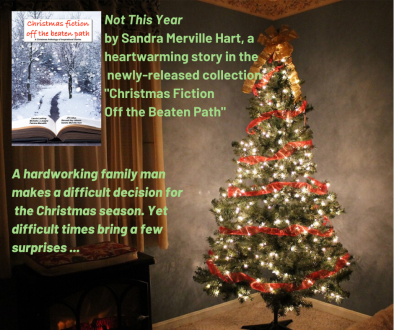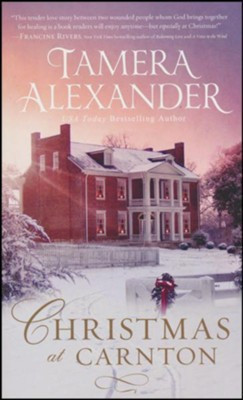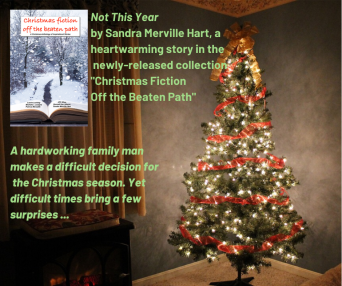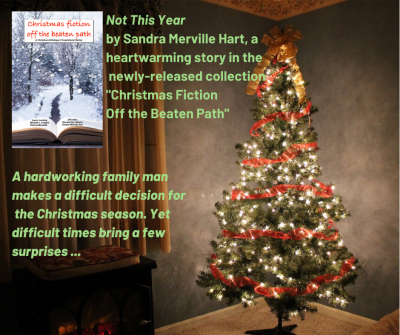Sandra Merville Hart's Blog, page 47
December 16, 2020
A Christmas Tradition: Epiphany
by Sandra Merville Hart
Epiphany is a word that some Christians use to describe the day that the Magi from the East found Jesus. The meaning of epiphany is a sudden, striking realization.
The Twelve Days of Christmas begin on December 25th with a celebration of the Jesus’ birth and end on January 6th, which is traditionally celebrated as the day the Magi’s visit.
In the Middle Ages, Epiphany was also known as Twelfth Night or King’s Day.
Prince Albert and Queen Victoria of England turned this celebration into a family celebration in middle of the nineteenth century. It celebrated the Magi’s revelation at finding the Christ child.
The holiday season was celebrated from Christmas Eve to the Eve of Epiphany, when families sang songs and took down decorations. They attended church services on the Eve of Epiphany. Aromas from baked or simmered herbs reminded Christians of the Magi’s gifts.
Children left food the wise men and hay for their camels that night. The food was usually gone the next morning, replaced by gold coins. This gift-giving was gradually replaced by Santa Claus in the United States and Father Christmas in England late in the 1800s.
Children in Germany dress up as Magi on January 6th and follow a child holding a star to find baby Jesus.
Epiphany is called “King’s Day” in parts of Mexico, Puerto Rico, Venezuela, and Argentina. Wise men leave presents on the Eve of Epiphany. “King’s cake” is often served as part of the next day’s celebration.
Children fill shoes with barley for the Magi’s livestock in Italy and Spain.
A ship sails into many Spanish seaports on the morning of Epiphany with the Magi on board. These wise men give candy to children lining the sidewalks.
It’s fun to discover some of the different traditions associated with the 12 Days of Christmas.
Collins, Ace. Stories Behind the Great Traditions of Christmas, Zondervan, 2003.
Kennedy, Lesley. “How 25 Christmas Traditions Got Their Start,” History, 2020/11/12
December 15, 2020
Christmas at Carnton by Tamera Alexander
Aletta Prescott struggles to make ends meet for her young son. She just lost her husband in this War Between the States as well as her job. Her baby is due in a couple of months and there’s no money to pay the mortgage. She prays for help.
Captain Jack Winston, a sharpshooter in the Confederate army, is recovering from battle wounds. His eyes aren’t healing as fast as he’d like. He yearns to get back to the battles but instead his colonel assigns him the task of assisting the Women’s Relief Society in Franklin, Tennessee.
Aletta feels fortunate to land a temporary position at the Carnton Plantation but she thinks the captain could better serve his country on the battlefield.
I really liked this story. It was a page turner for me. The characters were lovable and real. The struggles of the wives left back home while their husbands were at war tugged at my heart.
Part of the reason it snagged my interest was the setting—Franklin, Tennessee, in 1863. A portion of my Civil War romance, A Musket in My Hands, takes place a year later. The tragic Battle of Franklin happened on November 30, 1864, and is an important part of my story.
December 13, 2020
Christmas Dinner in the 1870s
by Sandra Merville Hart
Christmas dinner is a big meal at our house. We roast a turkey large enough to feed the family and provide leftovers for pot pies and sandwiches. There are plenty of side dishes with everyone’s holiday favorites. Dessert always includes at least pumpkin and chocolate pies. There are plenty of Christmas cookies too.
I thought this was a big meal until I read suggestions for Christmas dinners in an 1870s cookbook.
Here are the meats:
Clam soup, baked fish, Holland sauce;
Roast turkey with oyster dressing and celery or oyster sauce, roast duck with onion sauce, broiled quail, chicken pie
 There were numerous side-dishes:
There were numerous side-dishes:
Baked potatoes in jackets, sweet potatoes, baked squash, stewed carrots, turnips, canned corn, southern cabbage, tomatoes, canned pease (peas);
Graham bread, rolls; plum jelly, crabapple jelly;
Salmon salad or herring salad, pickled cabbage, mangoes, French or Spanish pickles, Chili sauce, gooseberry catsup; and
Beets, sweet pickled grapes, and spiced nutmeg melon.
 There were lots of dessert choices:
There were lots of dessert choices:
Christmas plum pudding with sauce, Charlotte Russe;
Pies—mince, peach, and coconut;
Cakes—citron, White Mountain, pound, Neapolitan, and French loaf;
Cookies—peppernuts, ladyfingers, centennial drops, almond or hickory nut macaroons;
Candy—coconut caramels, chocolate drops;
And even ice cream!—orange or pineapple
Beverage choices were coffee, tea, and Vienna chocolate.
If large families (grandparents, aunts, uncles, and cousins) prepared even a third of these dishes, they undoubtedly had one thing in common with us—leftovers!
Sources
Compiled from Original Recipes. Buckeye Cookery and Practical Housekeeping, Applewood Books, 1877.
December 9, 2020
A Christmas Tradition: Christmas Stockings
by Sandra Merville Hart
Modern Christmas stockings are large enough to hold fruit and small gifts, but this tradition had humble beginnings.
Hundreds of years ago, poor children often had only one pair of stockings (socks) so they washed them each night and hung them by the fireplace to dry. The next morning, they donned warm, dry stockings.
A priest named Nicholas ministered to families in his town of Patara and the whole area of what’s now known as Turkey in the fourth century. Nicholas, a wealthy man who became an archbishop while still in his twenties, had a generous heart for poor families, especially children.
Metaphrastes, a Christian author who lived in the tenth century, wrote that Nicholas learned of a poor widower while traveling outside his parish. He and his three teenaged daughters were starving to death. The father considered selling one of them into slavery to provide dowries for the others so at least two could marry, but he couldn’t do it.
The desperate father prayed for help. That night, some one opened a window, dropped a gold coin in the oldest daughter’s stocking, and quietly left.
The widower thanked God for the miracle. The coin was used to provide a dowry for his daughter and she was married. Then a gold coin was found in the next daughter’s stocking one morning. She was soon married. Later, the same thing happened for the youngest daughter. It always happened when Nicholas was nearby.
Adults and children in the region began checking their stockings daily. Nicholas traveled often to perform his duties and was known for his generosity.
It was around 350 when Nicholas died on December 6th. It became known as St. Nicholas’s Day. Children hung their stockings the night before hoping to find a treat the next morning. Often, they found one.
Stockings were associated with St. Nicholas’s Day for centuries. Then a poem by Clement Clarke Moore called “A Visit from Saint Nicholas” was published in 1823. It later became known as “’Twas the Night Before Christmas” and changed the date the stockings were hung to Christmas Eve.
Traditional gifts in stockings are symbolic. Oranges symbolize Nicholas’s gift of gold to the widower and his daughters. Apples are for health. Walnuts are for good luck.
It’s fun to learn the surprising history behind this modern holiday tradition.
Collins, Ace. Stories Behind the Great Traditions of Christmas, Zondervan, 2003.
Spivack, Emily. “The Legend of the Christmas Stocking,” Smithsonian Magazine, 2020/11/13 https://www.smithsonianmag.com/arts-culture/the-legend-of-the-christmas-stocking-160854441/.
December 8, 2020
For the Love of Emma by Starr Ayers
A packet of love letters found among the possessions of the author’s deceased mother sparked this wonderful time slip story.
In 1938, it’s love at first sight for Noah, a medic at Fort Bragg. Emma works as a waitress at Rainbow Restaurant and he goes there often in hopes of talking with her. Emma likes how he stands up for her and a courtship soon begins.
For a time, they must communicate through letters. Those letters from Noah are found by Emma’s daughters after her death in 2011. The contemporary side of this story with the sisters is just as intriguing as the historical aspect as readers receive clues about events.
Nostalgic. Mysterious. Ayers’ skillful weaving of the 1930s realistic characters living in the brink of World War II with the contemporary story snagged my interest from the first chapter.
The characters are believable and likeable. There is more than one man worthy of a good woman in this story. The intrigue of finding out what happened to their romance made this a page turner for me.
I can’t wait to read the second book in the series! Definitely recommend.
-Sandra Merville Hart
December 6, 2020
Pita Bread Recipe
Today’s post is by fellow author, Patricia Meredith. We both have stories in Christmas Fiction off the Beaten Path, a collection of inspirational Christmas stories. Sandra’s nostalgic story is about a hard-working family man in a difficult place called “Not This Year.” Patricia’s story was inspired by the song “Mary, Did You Know?” Welcome to Historical Nibbles, Patricia!
by Patricia Meredith
[image error] Joseph was working late again, so it was just me and Jesus. I cut up his lamb into small pieces, praying that maybe this time he ’ d eat the meat without complaint.
Like most children I ’ d known, he hadn ’ t yet “ acquired a taste” for meat, but it seemed to me the only thing he had acquired a taste for was bread. Bread for every meal. My hands were growing sore with all the kneading.
“ You cannot live on bread alone!” I cried when he refused once again to touch anything else before him.
His lips puckered and his eyes widened, and then he shoved in another fistful of bread.
I shook my head. At least he was growing.
— “Mary, Did You Know?” by Patricia Meredith
Like Mary, I love baking bread. One of my favorites is a simple Pita Bread recipe that makes a delicious, chewy bread perfect for wrapping around fresh vegetables and hummus. It’s cooked in a cast-iron skillet, which means if you cook it over an open fire, you get that nice outdoor smell and flavor added to the food, reminiscent of the way Mary might have cooked it in her home.
INGREDIENTS:
1 cup warm water
1 packet (2 ¼ tsp) active dry yeast
2 ½- 3 cups all-purpose flour
2 tsp salt
1 tablespoon olive oil (+1-2 T olive oil for cooking)
DIRECTIONS:
Mix the water and yeast and let stand for about five minutes. Add salt, olive oil, and 2 ½ cups of flour. Mix until combined and then knead with more flour for about 5-7 minutes. The dough should be smooth and elastic. Try to be sparing with the extra flour—less is better.
Run a little olive oil into a clean bowl, roll the dough in the oil, and then let the dough rest in the bowl, covered, until it’s doubled (about 1 hour).
Turn the dough out and divide it into smaller pieces. Depending on how thick you like your pita, you can usually get about 12-16 out of the risen dough. Using a floured rolling pin, roll each piece into a flat circle.
Heat a cast-iron skillet over medium heat. Drizzle oil in the pan. Lay a pita on the skillet and bake 1-2 minutes, until the bubbles start to form, keeping an eye on it. It should get toasted spots on it. Flip again and cook another 1-2 minutes on the other side. It should puff up, forming small pockets.
Remove from heat and cover with a towel. Eat hot and fresh!
[image error]About Patricia:
Patricia Meredith is the author of historical and cozy mysteries. She currently lives just outside Spokane, Washington on a farm with peacocks, ducks, guinea fowl, chickens, and sheep. When she’s not writing, she’s playing board games with her husband, creating imaginary worlds with her two kids, or out in the garden reading a good book with a cup of tea. Check out her blog at Patricia-Meredith.com, or follow her on Instagram and Facebook at @pmeredithauthor.
[image error]“Mary, Did You Know?” is one of the stories included in the Christmas Fiction Off the Beaten Path anthology. Ask for it at your favorite bookstore.
December 2, 2020
A Christmas Tradition: Christmas Trees
by Sandra Merville Hart
About a thousand years ago, people living in what is now Scandinavia were captivated by the way evergreen trees survived their harsh winters. They chopped down the trees and took them into their homes in the hopes they’d bring strength to survive the winter season.
The French and Germans hung evergreen trees upside down from the ceiling in the twelfth century, a practice that continued for about 200 years.
In December, fir trees, called “paradise trees,” were placed outside Catholic churches during medieval times in Europe’s Baltic region. Apples were hung on its branches for a play about Adam and Eve.
Fir trees were displayed on the ground in homes instead of hung from the ceiling by late in the 16th century.
[image error]Martin Luther, after a walk in the forest on a moonlit night, is generally credited with placing the first lit candles on a Christmas tree. To him the evergreen tree represented God’s everlasting love for us. The hope that the birth of Jesus brought into the world was symbolized by the candles or lights on the tree.
Americans of German descent living in Pennsylvania in the 1820s are said to have brought the tradition of Christmas trees to the United States to stay. It took the marriage of Prince Albert of Germany to Queen Victoria of England for the tradition to really take hold in the United States.
Toys, candy, popcorn, and candles decorated those Victorian trees.
It was easy for those living in rural areas to chop down an evergreen tree for their home. Those in cities had a tougher challenge. In 1851, Mark Carr recognized the need. He filled a large horse-drawn carriage with evergreens and sold them in a vacant lot in New York City.
Lots like that one can be found in cities and towns today. An estimated 81% of homes display an artificial tree, but there’s something about the traditional sight and smell of a real tree that keeps others buying them year after year.
[image error]Sources
“Christmas Trees,” Encyclopaedia Britannica, 2020/11/12 https://www.britannica.com/print/article/115737.
Collins, Ace. Stories Behind the Great Traditions of Christmas, Zondervan, 2003.
Kennedy, Lesley. “How 25 Christmas Traditions Got Their Start,” History, 2020/11/12
December 1, 2020
An Ivy Hill Christmas by Julie Klassen
A Tales from Ivy Hill Novella
Richard Brockwell wouldn’t be going home for Christmas if his mother hadn’t insisted. She held the purse strings so he left London on a cold December day in 1822. He’s lived a selfish lifestyle for so long that he doesn’t know how to rise above it … not that he wants to.
His mother, brother, and sister-in-law have invited guests to stay for the Twelve Days of Christmas. Among them is Arabella Awdry, who makes it clear she’s not interested in him.
But coming home reminds him of all the childhood hurts he has run from for years.
I loved this story! The author does a great job portraying Richard as a selfish bachelor that I didn’t like him for a while. The characters are believable and they tugged at my heart.
An especially fun part of this story for me was taking part (vicariously through the story) in the Christmas traditions of nearly 200 years ago. The parlor games, decorating for Christmas, and Christmas and Boxing Day traditions were an intriguing look at how our ancestors celebrated the holidays.
I’d love to read more books in this series!
[image error]-Sandra Merville Hart
November 30, 2020
Cyber Monday Sale!!!
40% Off Plus FREE Standard Shipping at ShopLPC.com with Coupon Code CYBERMONDAY40
Yes, this includes my books!
[image error]A Musket in My Hands
Two sisters have no choice but to join the men they love and muster into the Confederate army and in the fall of 1864—in time for things to go very badly for Southerners at the Battle of Franklin. This book is 2019 Serious Writer Medal Fiction Winner and a 2019 Selah Award Finalist.
[image error]A Rebel in My House
A wounded Confederate soldier on the first day of battle leaves a Gettysburg seamstress with a heart-wrenching decision. Both have made promises. Some promises are impossible to keep. This book won the 2018 Illumination Silver Award and second place in 2018 Faith, Hope and Love Readers’ Choice Award.
[image error]A Stranger in My House
A young woman finds a wounded Union soldier outside her Tennessee home in this 2015 IRCA Finalist and Christian Small Publishing Book of the Year 2016 Finalist.
[image error]The Cowboys
Taming the West … one heart at a time
Hart’s novella, Trail’s End, in “Smitten Novella Collection: The Cowboys” is set in the wild cattle town of Abilene, Kansas, in 1870.
[image error]Mt. Zion Ridge Press is also having a Cyber Monday Sale!
From November 30 – December 2, all books are 10% off with the coupon code CYBER
Yes, this includes my books!
Christmas Fiction Off the Beaten Path
Not This Year in “Christmas Fiction Off the Beaten Path,” is Sandra Hart’s heartwarming, nostalgic story of a hardworking family man facing difficult times at Christmas.
[image error]From the Lake to the River
A collection of stories set in Ohio by Ohio authors
Everyday citizens become heroes in Sandra Hart’s Surprised by Love novella in “From the Lake to the River,” set during the 1913 flood in Troy, Ohio.
November 24, 2020
31 Verses Every Believer Should Know by Sean Bess
He was Born to be
Jesus was born to be God with us, human like us, our servant, our light, and our Savior.
What a great devotional book for preparing our hearts for Christmas!
Each devotion begins with a scripture. Several of the devotional thoughts used examples from historical figures like Paul Revere, President Abraham Lincoln, and Harriet Tubman. Then it shifts our thoughts back to Jesus’ birth and shows how the example ties in.
Each chapter ends with thought-provoking questions.
I really liked reading this devotional to prepare my heart for the Christmas season. It’s creative with insightful devotions.
A great book for Christians and those seeking to know what the Bible teaches us about Jesus.
[image error]-Sandra Merville Hart











